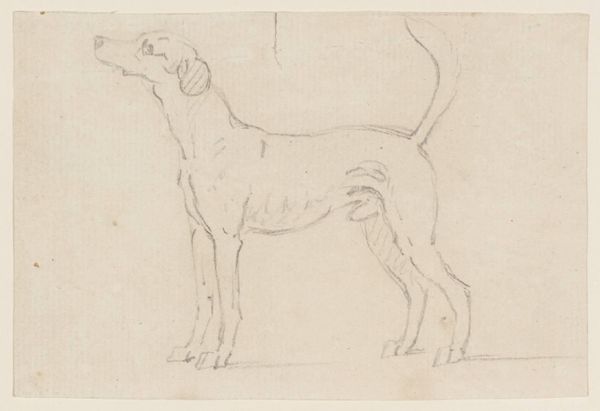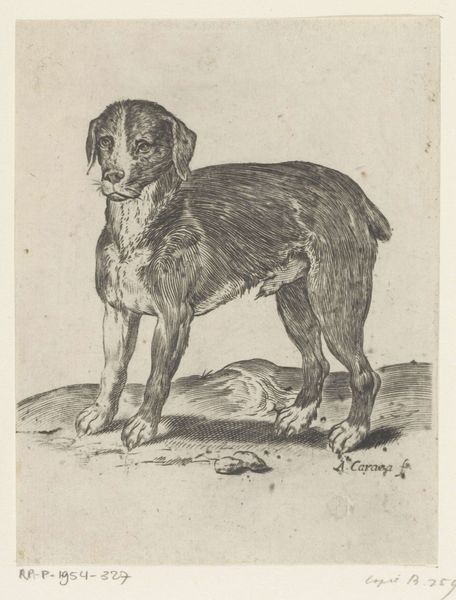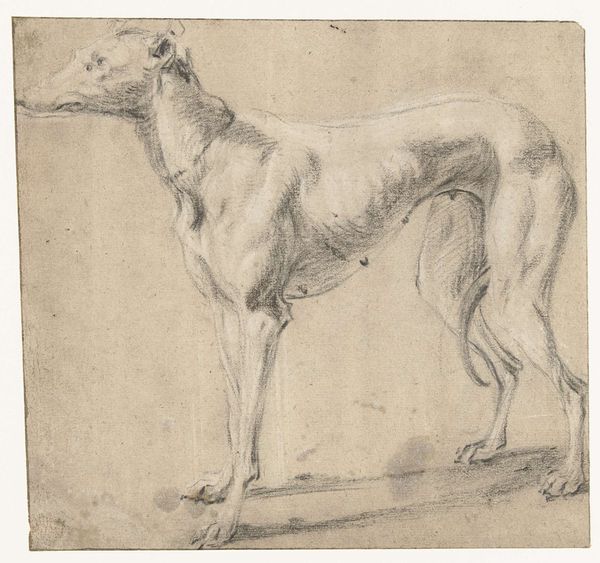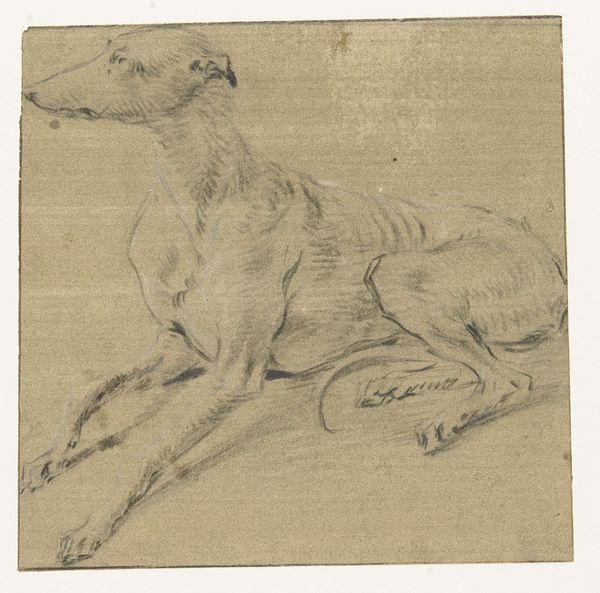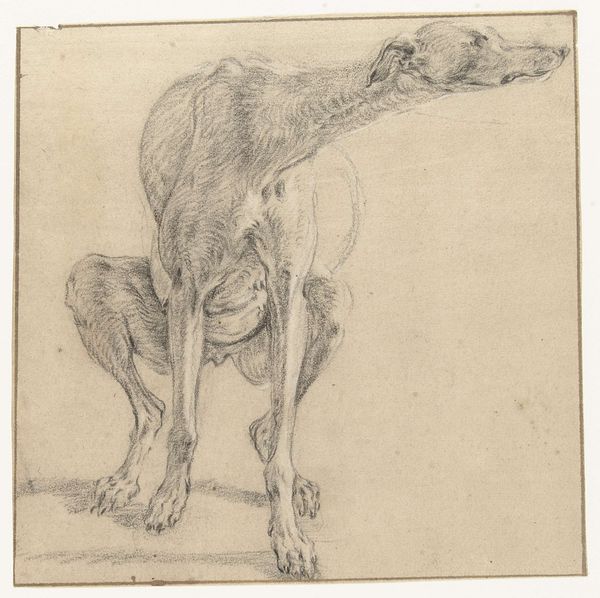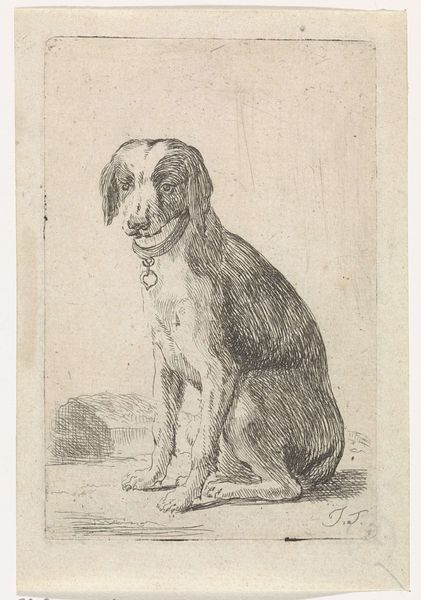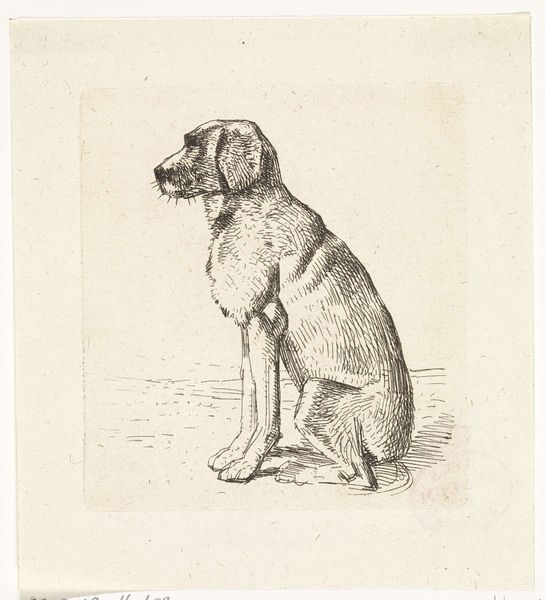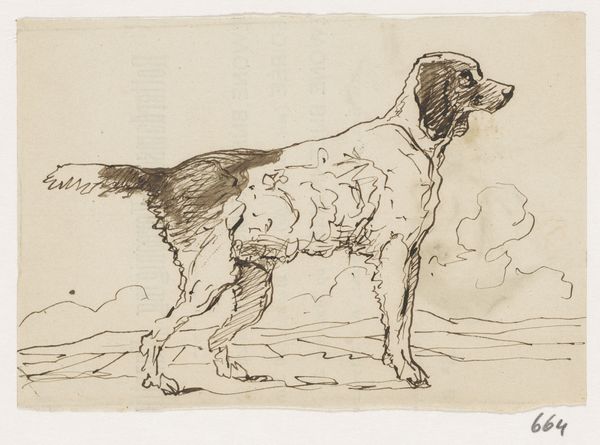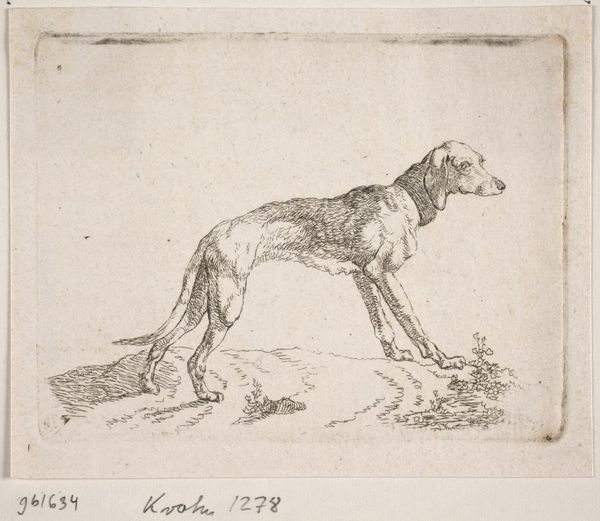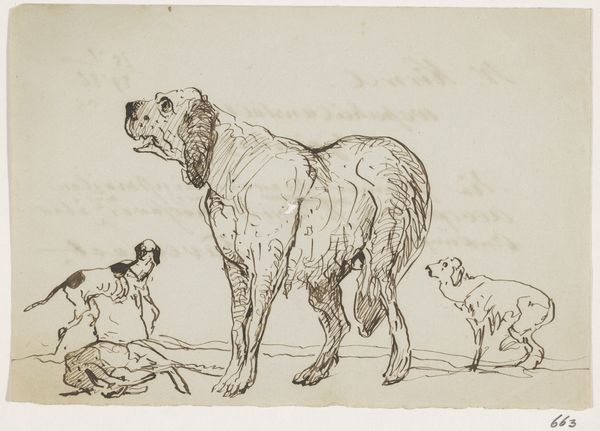
drawing, ink
#
drawing
#
quirky sketch
#
animal
#
pen sketch
#
dog
#
personal sketchbook
#
ink
#
idea generation sketch
#
sketchwork
#
ink drawing experimentation
#
pen-ink sketch
#
line
#
sketchbook drawing
#
storyboard and sketchbook work
#
sketchbook art
#
realism
Dimensions: height 146 mm, width 207 mm
Copyright: Rijks Museum: Open Domain
This etching of a greyhound, or ‘windhond’ as it is called in Dutch, was created by G. van Citters. The image speaks to the cultural role of dogs in 17th-century Dutch society. The greyhound, with its lean physique and graceful posture, was a symbol of aristocracy and leisure, often associated with hunting and the privileges of the wealthy. Dogs feature in art throughout the Dutch Golden Age, and this is partly due to the rise of a prosperous merchant class who kept dogs as pets. Consider the way the artist uses etching to capture the texture of the dog’s coat, and how the careful observation of anatomy conveys both elegance and strength. Art historians use estate inventories, manuals, and other documents to find out more about the history of pet ownership, and we continue to debate what dogs meant in a society undergoing vast social and economic change.
Comments
No comments
Be the first to comment and join the conversation on the ultimate creative platform.
